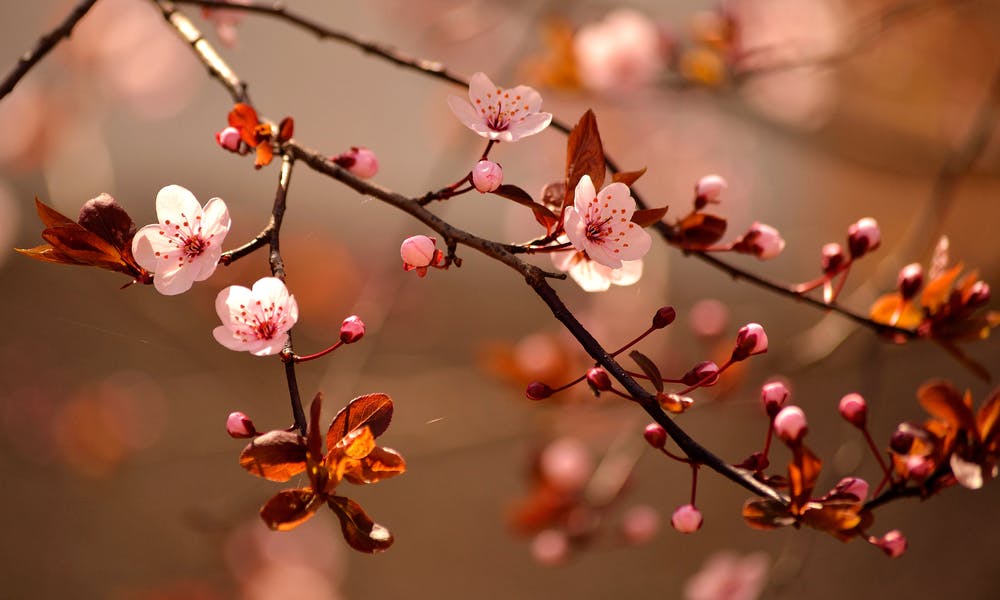MENU
Japan and its Flowers are Beautiful and Mind-Blowing

They say heaven is a place on earth, and we are pretty sure that if it is true, this place is surely full of flowers and nature’s bounty. As curious as you are, you surely want to know more about flowers, especially those all over the world, in foreign countries you wish to visit. Flowers hold so much grace and meanings, hidden under their subtle variation of colors, perfumes, and shapes. They are perfect for every occasion, mood, and personality, and they are the perfect vector for all your feelings.
Japanese is a place graced with nature’s wonders and beauties. There is a reason behind that: the Japanese, in their culture and history, always placed nature first, and even feared it. They used to maintain it, plant it, draw it, talk about it, bring examples from it, and always care about it. Moreover, Japanese people have their own language of flowers called Hanakotoba, which means “flowers’ words.
In this article, we are going to learn more about Japanese culture, especially Japanese flowers by exploring the following:
* Japanese history and beliefs about flowers
* Beautiful flowers for each month
* The beautiful Japanese flowers
* What is Hanakotoba?
Japanese History and Beliefs About Flowers
Japan is a beautiful country with many traditional rites that place nature first. The mixture of refinement, calm and meditative characteristic of this culture invites the inhabitants to serenity, guided by the rhythm of the blooms.
In this country, flowers are a key element for tradition. For example, the arrival of spring is a national event celebrated every year. This is mainly coming from their historically oldest Shinto beliefs where the keyword is nature and respect for its elements.
The arrival of Buddhism consolidated their relationship with nature, by completely linking the inhabitants to the plant world. Their numerous offerings to Buddha, composed of flowers and plants, even led to the creation of a floral art unique in the world.
The chrysanthemum flower currently represents the imperial seal and appears on passports and diplomatic papers. It was used for the first time by the emperor Go-Toba.
Beautiful Flowers for Each Month
It is common in Japanese culture to give a special flower for each month. Here are some examples:
The pretty flower of May is lily of the valley or suzuran. It evokes the sweetness of spring, which is settling in, to become summer.
For the hottest month on this side of the hemisphere, August, the flower that evokes heat and sun is undoubtedly the sunflower or Himawari. Perhaps because it always turns to the sun, the Japanese have chosen to plant it near the scene of the Fukushima nuclear disaster to clean up the earth. The Kagawa prefecture is known for its production of sunflowers.
For September, the color of autumn is red, and its flower is Lycoris radiata or red Lycoris, (higanbana.) It is widely used for ikebana, which is a Japanese flower arrangement technique. Some Japanese people also associate this flower with death since the autumnal is a period when people go to the tombs of their ancestors.
The climate of Japan has temperatures ranging from the cold and wintery to the warm and delightful. Japanese flowers have symbolism, beauty, and the merit of being very resistant to most weather. Here are the famous ones:
The lotus is a very old flower (1,300 years ago for some, or 2,000 years for others), and is even considered as the oldest flower in the world. In the Buddhist religion, you can refer to it as a symbol of purity, because it comes from standing water. The variety of Nelumbo Nucifera is the most typical in Japan. The Lotus can resist frozen water down to -15 degrees C.
Iris japonica, also called “fringed iris,” comes from the Iridaceae family. It grows in Japan and resists cold down to -10 degrees C. It has the distinction of being very bright, even in shaded areas. Its flowering is short but still it is the brightest flower you may ever see.
What is Hanakotoba?
Hanakotoba stands for “flowers’ words.” It is a special Japanese language of flowers to be able to communicate through them. As we told you previously, the Japanese people value nature and give so many values to flowers in their culture. This means that every composition holds so many feelings and meanings by itself. Your bouquet may sometimes be more impactful than simple words.
For example, the cherry blossom, or sakura, is one of the most symbolic flowers in Japan. This beautiful little flower means “purity” and “gentleness of heart” in the hanakotoba. Because this flower does not last long, it serves as a reminder of how much life is short and how you should value it and live with your best intentions each day.
There is also, the famous Camellia. It strongly refers to the “noble death” in Hanakotoba, due to how the flower dies. The honorable Camellia tends to lose its petals all at once.
Japanese culture is rich in meaning, and so are their compositions of flowers! You want the perfect combination to express your deep caring love to your lover, family, and friends. The
Japanese language of flowers, Hanakotoba, can offer you a completely new world of meanings. Indeed, because of the richness of the Japanese culture and their big respect for nature’s beauty and amazingness, they gave flowers so much time and deepness in their interpretations.
Choose the sakura, the camellia, or the iris to make your beloved ones happier than ever and bring some joy into their life! They can also relieve them from their stressful life by giving it a touch of beauty and sweet scent, and show them how very dear they are to you.

